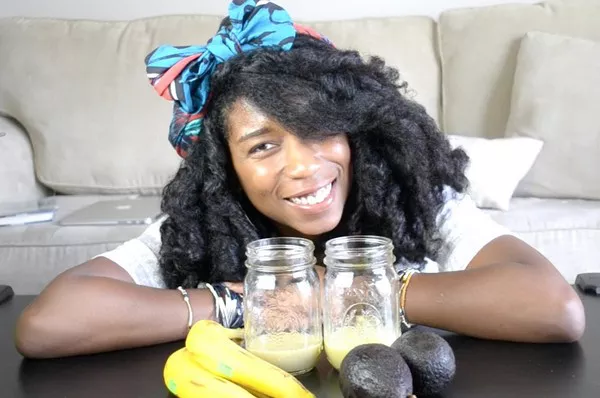Dry hair can be a common concern for many women, often resulting from factors such as excessive heat styling, environmental conditions, or genetics. Fortunately, with the right care and attention, it’s possible to restore moisture and vitality to dry locks. In this article, we’ll explore effective strategies for moisturizing and protecting dry hair, helping women achieve healthy and luscious locks.
1. Understanding the Causes of Dry Hair
Before delving into hair care routines, it’s essential to understand the potential causes of dry hair. Factors such as overuse of heat-styling tools, exposure to harsh weather conditions, chemical treatments, and insufficient hydration can contribute to dryness. Additionally, some individuals may have naturally dry hair due to genetic factors. Identifying the root cause can guide personalized care routines for optimal results.
2. Hydrating Shampoos and Conditioners
Selecting the right shampoo and conditioner is crucial for combating dryness. Look for products specifically formulated for dry or damaged hair, containing hydrating ingredients such as argan oil, shea butter, or glycerin. These ingredients help replenish moisture, leaving the hair softer and more manageable. Consider a sulfate-free shampoo to prevent further stripping of natural oils from the hair.
3. Deep Conditioning Treatments
Incorporating deep conditioning treatments into your hair care routine is a game-changer for women with dry hair. Weekly or bi-weekly deep conditioning can provide intense hydration, nourishing the hair from within. Choose a product with ingredients like coconut oil, avocado oil, or keratin to promote strength and moisture retention. For added benefits, use a shower cap to lock in heat and enhance the treatment’s effectiveness.
4. Regular Trims for Healthy Ends
Split ends and breakage are common issues for individuals with dry hair. Regular trims, approximately every 8-12 weeks, help prevent split ends from traveling up the hair shaft, maintaining the overall health and appearance of the hair. This practice is particularly important for women with longer hair, as the ends are more prone to dryness and damage.
5. Limiting Heat Styling and Protecting Hair
Excessive use of heat styling tools can exacerbate dryness by stripping the hair of its natural moisture. When styling, use a heat protectant spray or serum to create a barrier between the hair and heat. Additionally, consider embracing heat-free styling methods, such as braids or air-drying, to minimize damage and promote moisture retention.
6. Balanced Diet and Hydration
Healthy hair starts from within, and maintaining a balanced diet is crucial for combating dryness. Ensure you’re consuming an adequate amount of vitamins and minerals, particularly those that support hair health, such as biotin, vitamin E, and omega-3 fatty acids. Staying hydrated is equally important, as dehydration can contribute to dry and brittle hair.
7. Avoiding Harsh Chemicals
Certain hair care products, such as those containing harsh chemicals or alcohol, can strip the hair of its natural oils and contribute to dryness. Opt for sulfate-free and alcohol-free formulations to maintain the hair’s moisture balance. Natural and organic products with minimal chemical additives are often gentler on dry hair.
8. Protective Hairstyles
For women with dry hair, protective hairstyles can be a beneficial addition to the hair care routine. Styles like braids, twists, or buns help minimize exposure to environmental elements, reducing the risk of damage and dryness. Be mindful not to style the hair too tightly, as this can lead to breakage.
FAQs on Hair Care for Women with Dry Hair
Q1: Can I use any conditioner for dry hair, or are there specific ingredients to look for?
A1: While any conditioner can provide some level of moisture, look for products containing hydrating ingredients such as argan oil, shea butter, glycerin, or keratin for optimal hydration and nourishment.
Q2: How often should I deep condition my hair if it’s dry?
A2: The frequency of deep conditioning depends on the severity of dryness. In general, once a week or every two weeks is recommended for intense hydration. Adjust the frequency based on your hair’s response.
Q3: Are there specific vitamins or foods that can help combat dry hair?
A3: Yes, a balanced diet rich in biotin, vitamin E, and omega-3 fatty acids can support hair health. Include foods like fish, nuts, seeds, and leafy greens in your diet for optimal results.
Q4: Can I still style my hair if it’s dry, or should I avoid heat styling altogether?
A4: You can still style your hair, but it’s essential to use heat protectant products and limit the frequency of heat styling. Consider incorporating heat-free styling methods to minimize damage.
Q5: Are there specific hairstyles that work best for protecting dry hair?
A5: Protective hairstyles such as braids, twists, and buns can help minimize exposure to environmental elements and reduce the risk of damage for women with dry hair. Ensure the style is not too tight to prevent breakage.

